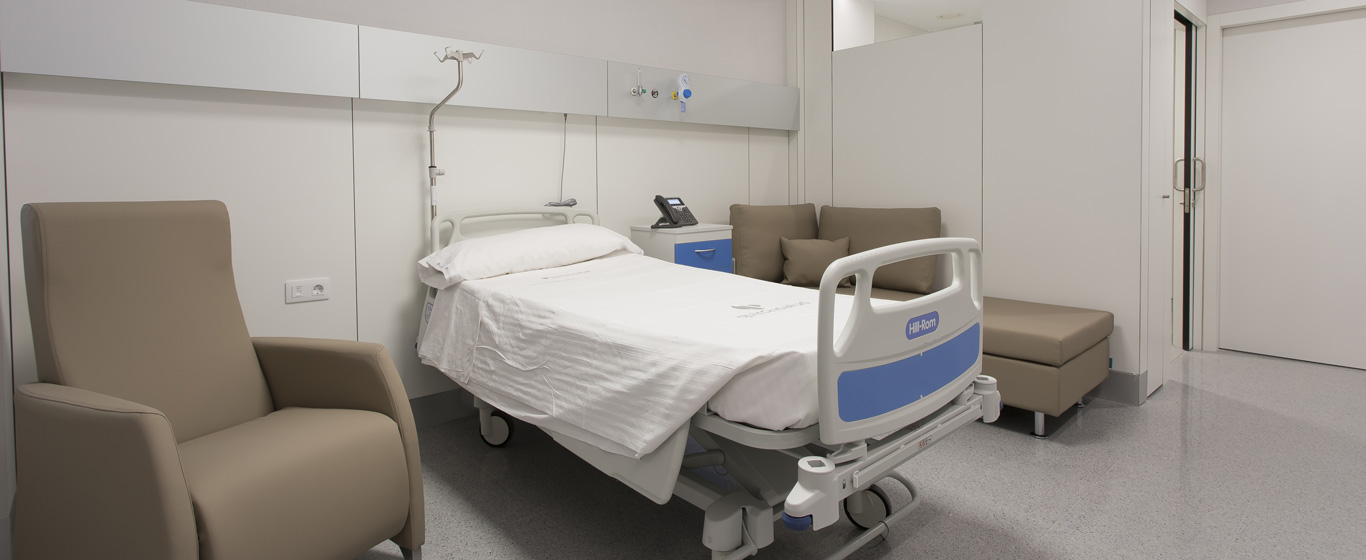Neuropathic Pain
Why does neuropathic pain occur? All the information on the causes, symptoms, and treatment of this type of pain.
Symptoms and Causes
Neuropathic pain is a neurological disorder defined as pain resulting from an injury or illness that causes a disruption in the control and modulation mechanisms of the somatosensory system. This system is responsible for processing information related to pain, temperature, touch, and body posture. Such disruption causes an abnormal response to painful, thermal, and tactile stimuli.
Depending on the part of the nervous system affected, two types of neuropathic pain are distinguished:
- Central Neuropathic Pain: The injury affects the central nervous system (the brain and spinal cord).
- Peripheral Neuropathic Pain: The most common type. It affects the peripheral nervous system (peripheral nerves and nerve ganglia).
Based on the distribution of the pain, the types are:
- Localized Neuropathic Pain: There is a well-defined, consistent area of maximum pain.
- Diffuse Neuropathic Pain: It does not have a specific location and radiates.
Symptoms
The symptoms of neuropathic pain are classified into two groups: positive and negative:
- Positive Symptoms: Indicate abnormal neurosensory responses.
- Spontaneous, very sharp, persistent, stabbing, or burning pain.
- Dysesthesia: Abnormal and unpleasant tactile perception. It may feel like pain.
- Paresthesia: Abnormal sensation that is not necessarily unpleasant (tingling, numbness).
- Allodynia: Painful response to a non-painful stimulus.
- Hyperalgesia: Exaggerated response to a painful stimulus.
- Hyperpathia: Abnormal and progressively increasing pain response to repetitive stimuli.
- Pain in an anesthetized area.
- Presence of hypersensitive areas.
- Involuntary muscle contractions or tremors.
- Excessive sweating.
- Negative Symptoms: Indicate sensory deficits.
- Hypoesthesia: Reduced sensitivity to tactile and thermal stimuli.
- Hypoalgesia: Reduced sensitivity to normally painful stimuli.
- Anesthesia: Complete loss of sensitivity.
- Analgesia: Absence of pain to painful stimuli.
- Decreased or absent sweating.
- Complete or partial loss of motor function in one or more muscles.
Causes
Injuries or illnesses that can damage the nervous system and cause neuropathic pain include:
- Causes of Central Neuropathic Pain:
- Strokes.
- Demyelinating diseases, such as multiple sclerosis.
- Neurodegenerative diseases, such as Parkinson's.
- Cysts or tumors in the spinal cord.
- Myelitis: Inflammation of the spinal cord.
- Spinal cord injury or trauma.
- Causes of Peripheral Neuropathic Pain:
- Radiculopathy: Pressure on nerve roots (pinching).
- Infections, such as HIV or herpes zoster.
- Metabolic or autoimmune disorders, such as diabetes mellitus, rheumatoid arthritis, or lupus.
- Surgical processes that damage the nervous system.
- Peripheral nerve trauma, such as trigeminal neuralgia or complex regional pain syndrome.
- Cancer and chemotherapy treatments.
- Exposure to toxic substances, such as industrial chemicals or heavy metals.
- Nutritional imbalances and deficiencies of vitamins B and E.
- Alcoholism.
Risk Factors
The likelihood of developing neuropathic pain increases with the following factors:
- Presence of the aforementioned diseases or disorders.
- Alcohol abuse.
- Deficient diet in nutrients and vitamins.
- Previous surgeries.
- Habitual handling of toxic substances.
Complications
Neuropathic pain, especially if chronic, can greatly impact the patient's quality of life, leading to:
- Sleep disorders.
- Increased levels of anxiety and depression.
- Restrictions in daily activities, potentially leading to incapacity.
- Increased risk of injury, burns, or serious wounds due to lack of sensitivity.
Prevention
The following tips help prevent neuropathic pain or reduce its intensity:
- Follow a healthy diet rich in vegetables, whole grains, and lean protein.
- Maintain good posture hygiene.
- Exercise regularly to strengthen muscles.
- Reduce alcohol consumption.
- Avoid exposure to chemical substances.
What Doctor Treats Neuropathic Pain?
Neuropathic pain is diagnosed and treated by specialists in neurology, anesthesiology, and the pain unit.
Diagnosis
Despite the importance of early diagnosis, neuropathic pain is often underdiagnosed, particularly when there is no known underlying condition causing it. Therefore, it is crucial to thoroughly assess the symptoms reported by the patient and their full medical history. Afterward, various tests can be performed to confirm neuropathic pain and determine its origin:
- Neurological-Sensory Examination: To confirm or rule out motor, sensory, or autonomic deficiencies. Muscle strength, coordination, movement fluency, reflexes, and response to tactile, thermal, vibration, or pressure stimuli are checked.
- Electromyography and Nerve Conduction Study: Electrodes attached to the skin or inserted into the muscle measure electrical activity and the speed and intensity of nerve signals. It helps identify nerve damage.
- Imaging Diagnostic Tests: Such as CT scans or MRIs, to locate anomalies affecting the nervous system, such as radiculopathies, hernias, or tumors.
- Blood Tests: To search for metabolic anomalies or markers of infection or inflammation.
- Skin and Nerve Biopsy: If the previous tests are inconclusive, a sample of skin or nerve tissue may be analyzed.
Treatment
The treatment of neuropathic pain aims to relieve or reduce the pain and treat the underlying cause. Various options are available:
- Pharmacological Treatment: Administration of inhibitory, analgesic, and anxiolytic medications, such as anesthetics, antidepressants, neuromodulators, antiepileptics, cannabinoids, or opioids.
- Pain Therapies:
- Radiofrequency: Pulses of radio waves are applied to the nerves transmitting the pain.
- Selective Nerve Root Block: In cases of radiculopathies, the pain-transmitting nerve is blocked by injecting a local anesthetic into the nerve root.
- Ozone Therapy: Ozone is injected into the affected area to reduce inflammation and pain.
- Transcutaneous Iontophoresis: For localized neuropathic pain, ionized medication is delivered through the skin using low-intensity current.
- Scrambler Therapy: Electrical impulses are applied through electrodes to replace pain signals sent to the brain with signals from areas without pain.
- Surgical Procedures:
- Spinal Stimulation: A device is implanted to record the pain signal and emit a pain-relieving signal.
- Intrathecal Infusion: A device is implanted to administer concentrated drugs directly into the spinal area. This is recommended for chronic pain that does not respond to other treatments.
- Ablative or Destructive Surgery: Part of the nerve tissue is removed to interrupt pain signals.




































































